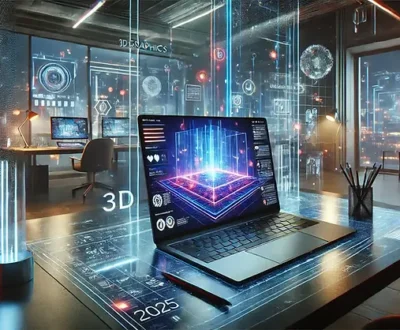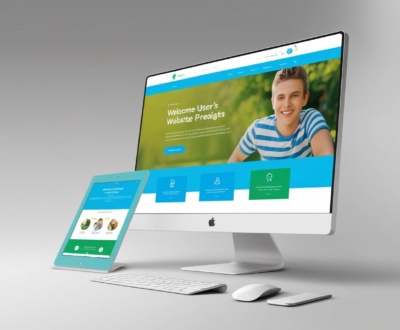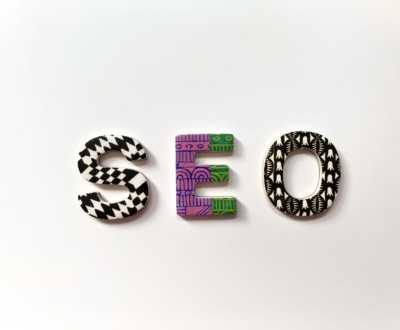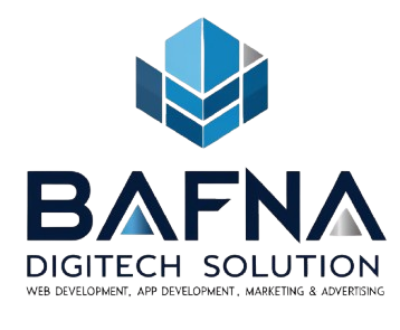Introduction to Website Design Trends
As we approach 2025, the landscape of website design continues to evolve at an unprecedented pace. Websites serve as the digital storefronts for businesses, and the importance of adopting current design trends cannot be overstated. By aligning with the latest web design trends, businesses can enhance user experience, increase engagement, and ultimately drive higher conversion rates.
The significance of website design trends lies in their ability to create more intuitive, visually appealing, and accessible online experiences. Users expect a seamless interaction with websites, and trends often reflect the changing preferences and behaviors of consumers. By staying abreast of these trends, businesses position themselves to meet and even exceed customer expectations. Whether it involves adopting minimalistic designs, optimizing for mobile devices, or implementing advanced technologies like artificial intelligence, the strategic integration of current trends can lead to more effective user engagement.
Moreover, the digital landscape is characterized by rapid advancements in technology. Innovations such as augmented reality (AR) and virtual reality (VR) are becoming more commonplace in web design, offering unique ways to engage users. This constant evolution underscores the need for businesses to remain agile and responsive to these changes. As competitors adopt new features and design methodologies, a commitment to staying updated with website design trends may serve as a significant differentiator in attracting and retaining customers.
In summary, understanding and implementing contemporary website design trends is not merely beneficial; it is essential for businesses aiming to thrive in the competitive marketplace of 2025. Companies that invest in modern web design will likely see enhanced user engagement and improved conversion rates, making it a critical focus area for sustained growth and success.
Minimalism and Clean Aesthetics
In recent years, minimalism has emerged as a predominant trend in web design, particularly as businesses strive to enhance the user experience on their platforms. The principle of minimalism revolves around the idea of “less is more,” which effectively simplifies the visual presentation of a website. By utilizing a clean aesthetic, designers can reduce cognitive load, thereby allowing users to navigate the site with ease and clarity.
One of the key design elements of minimalism is the effective use of whitespace. Whitespace, or the empty spaces between design elements, plays a pivotal role in drawing attention to important content. It creates a sense of balance and organization, making it easier for users to process the information presented. Additionally, a well-implemented whitespace strategy can contribute to an overall calm and inviting atmosphere on the website, which is essential for retaining visitors.
Another significant aspect of minimalistic design is the use of simple navigation. A streamlined navigation menu focuses on essential links, reducing clutter and confusion. This straightforward approach not only improves usability but also guides users in navigating the website efficiently. By limiting the number of options available, businesses can enhance the likelihood of users achieving their goals, whether that be making a purchase or finding information.
Moreover, a limited color palette is commonly employed in minimalist web designs. Utilizing a cohesive and restrained color scheme helps to create unity throughout the website, while also driving attention to specific calls to action. By prioritizing a few key colors, designers minimize distractions, enabling users to focus on content rather than being overwhelmed by a multitude of hues.
Ultimately, adopting minimalist and clean aesthetics can significantly elevate a business’s online presence, fostering an intuitive user experience that encourages engagement and interaction.
Dark Mode Design
Dark mode design has emerged as a prominent trend in the realm of website design, capturing the attention of both users and developers alike. This design approach utilizes dark backgrounds with lighter text elements, providing a striking contrast that enhances visual appeal. The growing adoption of dark mode can be attributed to various factors, including its aesthetic qualities and its beneficial effects on user experience.
One of the primary psychological impacts of dark mode is its ability to create a sense of calm and focus among users. Research suggests that darker interfaces can reduce visual stresses and improve concentration, particularly in low-light environments. Additionally, dark mode has been shown to decrease eye strain, especially during extended periods of screen time. By minimizing the intensity of bright colors and offering a less glaring experience, it allows for a more comfortable interaction and can positively influence user engagement.
Beyond comfort, implementing dark mode can contribute to significant energy savings on devices with OLED screens, as fewer pixels are lit. This characteristic positions dark mode as a more sustainable option in the long term. However, while embracing this trend, it is crucial for businesses to maintain a balance between aesthetics and accessibility. Websites must ensure that text remains legible against dark backgrounds, avoiding color combinations that could hinder readability. Employing sufficient contrast and maintaining adherence to accessibility standards can make a considerable difference in user experience.
To effectively integrate dark mode, designers should consider offering it as an option rather than making it the default setting. This provides users with the autonomy to choose their preferred display mode, catering to diverse preferences. Moreover, providing a seamless toggle between light and dark modes can enhance user satisfaction, allowing a personalized browsing experience. In conclusion, the incorporation of dark mode design can elevate user engagement and satisfaction, making it an essential trend for businesses in 2025.
Interactive and Engaging Elements
In the competitive online landscape, the role of interactive design elements has become increasingly pivotal. Websites that incorporate animations, micro-interactions, and immersive experiences not only capture user attention but also enhance the overall experience, making it feel more dynamic and engaging. The incorporation of these interactive features can significantly impact how users interact with a website, ultimately influencing their satisfaction and willingness to stay longer.
Animations can bring static content to life, drawing the user’s eye to important features or calls to action. For instance, subtle transitions between different states of a web element can provide clarity and guide the user experience. Such animations can serve as visual cues that indicate interactivity, fostering a sense of exploration within the site. When properly employed, they enrich the narrative of the website, allowing users to connect better with the displayed content.
Micro-interactions, which refer to the small, subtle interactions a user can engage in on a website, such as liking a post or toggling a switch, also play a crucial role in fostering engagement. These elements enhance user experience by providing instant feedback, reinforcing users’ actions and making the overall browsing experience more rewarding. A well-designed micro-interaction can effectively communicate a brand’s identity and build emotional connections with visitors.
Lastly, immersive experiences, including virtual reality and augmented reality features, are making strides in web design, offering users a unique and captivating way to engage with content. By providing an interactive layer that allows users to explore products or services in an engaging manner, businesses can significantly elevate user engagement and foster a positive emotional response towards the brand.
Overall, the integration of interactive elements into web design is essential, as it not only boosts user engagement but also leads to longer visit durations and improved satisfaction. This trend is likely to persist as businesses recognize the value of dynamic and engaging websites in enhancing customer experience.
Sustainable and Eco-friendly Design
As consumers become increasingly aware of environmental issues, businesses are recognizing the importance of incorporating sustainability into their web design strategies. Sustainable and eco-friendly design not only reflects a company’s commitment to environmental responsibility but also appeals to a growing demographic of conscious consumers. By adopting eco-friendly practices, organizations can reduce their ecological footprint while enhancing their brand image.
One of the primary ways to achieve sustainability in web design is through the optimization of website performance. Efficiently coded websites require fewer server resources and reduce energy consumption, ultimately contributing to a decrease in carbon emissions. Techniques such as minimizing image sizes, leveraging browser caching, and reducing HTTP requests significantly improve load times and energy efficiency. These optimizations ensure a seamless user experience, which is favorable for both visitors and search engine rankings.
Moreover, the choice of hosting providers plays a critical role in sustainable web design. Many hosting companies now offer green hosting solutions that utilize renewable energy sources to power their data centers. By opting for these sustainable hosting providers, businesses can further diminish their website’s environmental impact. This commitment to sustainability can resonate with consumers who are increasingly inclined to support brands that prioritize eco-friendly practices.
In addition to practical measures, clear communication about sustainability efforts on a brand’s website can enhance consumer trust and loyalty. Incorporating elements that highlight a business’s dedication to sustainability, such as eco-certifications or transparency reports, can attract environmentally conscious customers. As companies strive to implement sustainable and eco-friendly design in their websites, they foster a positive brand reputation that is likely to engage a responsible customer base.
Typography as a Visual Element
In the realm of modern web design, typography serves as a critical visual element that goes beyond mere text. It has evolved into a powerful tool that enhances brand identity, guides user experience, and influences perception. As we approach 2025, distinct typography trends are emerging and gaining popularity, shaping how businesses communicate their values and engage their audience.
One prominent trend is the use of bold fonts. This approach not only captures attention but also conveys strength and decisiveness. Businesses are increasingly opting for larger, bolder typefaces to highlight key messages and create a memorable first impression. This trend is particularly effective in drawing users’ eyes to important information, thereby improving readability and engagement.
Another noteworthy development in typography is the rise of variable fonts. These versatile typefaces allow for a range of styles within a single font file, enabling designers to manipulate weight, width, and slant dynamically. Variable fonts facilitate more fluid designs, allowing for greater creativity and customization in typography without compromising website performance. This trend optimizes user experience by ensuring that text remains clear and stylish across various screen sizes and resolutions.
Furthermore, creative font combinations are reshaping the way brands express themselves. By juxtaposing different typefaces—whether contrasting a serif with a sans-serif or mixing playful display fonts with more understated styles—designers can craft unique visual narratives that resonate with their audience. This approach aids in establishing a distinct voice and can significantly enhance overall brand identity.
In summary, effective typography is essential in modern web design. Trends such as bold fonts, variable fonts, and innovative font combinations are not only visually appealing but also contribute to a compelling user experience, ensuring that brands can effectively communicate their messages and values in a crowded digital landscape.
Personalization and Artificial Intelligence
In the rapidly evolving landscape of web design, personalization has emerged as a pivotal trend, significantly enhanced by advancements in artificial intelligence (AI). This convergence facilitates the creation of tailored user experiences that resonate with individual preferences, behaviors, and demographics. As businesses strive to improve customer engagement and loyalty, leveraging AI-driven tools in website design has become increasingly essential.
AI allows website designers to curate personalized content dynamically. By analyzing user data, AI algorithms can predict and recommend products or services that align with a visitor’s behavior. For example, e-commerce platforms can present customized shopping suggestions based on the user’s previous interactions and purchasing history. This level of personalization not only enhances user experience but also fosters a deeper connection between the brand and its audience.
Additionally, AI-powered chatbots and virtual assistants are revolutionizing customer service on websites. These tools utilize natural language processing to engage users in real time, answering queries and guiding them through the website based on their interests. Such interactions lead to a more engaging user experience and can significantly reduce bounce rates.
Another vital aspect of this trend is the capability of AI to segment users effectively. Businesses can leverage machine learning algorithms to categorize their audience based on various criteria such as demographics and behavior patterns. This segmentation allows for laser-focused marketing strategies and content delivery that can drive conversions and enhance customer loyalty.
Moreover, personalization can extend to the aesthetic aspects of a website. With AI, designers can alter elements like layouts, color schemes, and content placements in real-time, adapting to user preferences as they navigate. This responsiveness can significantly elevate the website’s effectiveness in retaining visitor attention.
As we advance toward 2025, the integration of personalization and AI in website design is set to reshape how businesses interact with their customers, ultimately driving success through enhanced user experiences.
Voice User Interface (VUI) and Accessibility
As technology continues to evolve, the voice user interface (VUI) has emerged as a transformative element in website design. VUI is increasingly becoming a critical component that enhances user experience and accessibility, allowing individuals to interact with websites through voice commands. This trend is particularly significant in 2025, where inclusivity is a top priority for designers and developers alike.
Integrating VUI into website design offers various advantages, particularly for users with disabilities or those who may find traditional navigation challenging. By facilitating voice commands, VUI transforms the way users engage with content, making information more accessible. Additionally, VUI can support a broader audience, appealing to those who prefer hands-free interactions or have limited proficiency with conventional input devices.
To effectively incorporate VUI, web designers must focus on natural language processing, ensuring that the interface understands and responds accurately to diverse speech patterns. This requires considering regional accents, colloquialisms, and various dialects, allowing for a more personalized experience. Furthermore, incorporating VUI can enhance user engagement by providing immediate assistance, answering queries, and offering personalized recommendations based on user preferences.
Indeed, the broader trend of designing for inclusivity calls for a reconsideration of how websites are structured. It is essential for web designers to ensure that all elements of a site are compatible with voice commands. This involves optimizing content for both auditory and visual comprehension, ensuring that all users can navigate effectively, regardless of their abilities.
In summary, the rise of voice user interfaces in website design is not just a technological advancement but also a necessity in fostering an inclusive digital environment. By integrating VUI in a thoughtful and user-centered approach, businesses can significantly elevate their websites, catering to a diverse audience while enhancing overall user experience.
Mobile-First Design Approach
As we approach 2025, the mobile-first design approach has become a critical element for businesses aiming to improve their online presence. With the majority of internet traffic originating from mobile devices, it is imperative for designers and developers to prioritize mobile experiences when creating websites. This strategy ensures that users encounter an optimized interface, regardless of the device they utilize, thereby enhancing overall user engagement and satisfaction.
Responsive design techniques have evolved significantly to address the varying screen sizes across devices. According to recent studies, around 54% of web traffic now comes from mobile phones, making the need for effective responsive designs more crucial than ever. Employing a flexible grid layout, fluid images, and CSS media queries enables developers to create websites that adapt seamlessly to different screen sizes. Single-page applications (SPAs) also play an integral role in this approach. SPAs enhance user experiences by loading content dynamically without the need for full-page refreshes. This not only significantly boosts speed but also improves the interaction rate, which is essential for retaining mobile users.
Statistics reflect the growing trend of mobile usage. For instance, research indicates that mobile users are 30% more likely to convert than desktop users. This statistic highlights the importance of prioritizing mobile design to meet user expectations and drive conversions. Furthermore, case studies from leading companies reveal that implementing a mobile-first strategy has led to substantial increases in both traffic and user engagement. For instance, one major retail brand reported a 25% increase in mobile transactions after redesigning their website with a mobile-first philosophy. Such outcomes demonstrate the undeniable impact and need for incorporating a mobile-first design in 2025.
Conclusion and Forward-Thinking Strategies
As we have explored in this discussion, the landscape of website design is continually evolving, driven by technological advancements and changing consumer preferences. The key trends that are set to elevate businesses in 2025 include the use of immersive experiences, sustainability-focused designs, and the integration of AI-powered tools. These elements not only enhance user engagement but also reflect a commitment to innovation and customer-centric strategies.
For businesses aiming to remain relevant, it is essential to stay informed about these trends and proactively integrate them into their online presence. First and foremost, companies should prioritize user experience by ensuring their websites are intuitive and responsive. This can be achieved by employing modern design frameworks that adapt seamlessly across various devices, allowing users to access information efficiently.
Moreover, embracing sustainability in design can significantly bolster a company’s reputation. Businesses can explore eco-friendly hosting options and ensure that their digital footprint is minimal. By addressing environmental concerns through their digital strategies, businesses can attract a more conscientious customer base that values sustainability.
Additionally, leveraging data analytics and AI tools will become increasingly vital. Utilizing insights derived from user interactions can inform design improvements and marketing strategies. Regularly updating content based on user behavior will not only enhance the website’s effectiveness but also foster a deeper connection with the audience.
In conclusion, the integration of cutting-edge design trends is imperative for companies that seek to maintain a competitive edge in an ever-changing digital landscape. By implementing these forward-thinking strategies, businesses can effectively position themselves for success in 2025 and beyond, ensuring they meet the expectations of a dynamic market.
About us and this blog
We are a digital marketing company with a focus on helping our customers achieve great results across several key areas.
Request a free quote
We offer professional SEO services that help websites increase their organic search score drastically in order to compete for the highest rankings even when it comes to highly competitive keywords.
Subscribe to our newsletter!
More from our blog
See all postsRecent Posts
- Best Website Design Trends 2025 – AI, Dark Mode & UX Innovations February 9, 2025
- Step-by-Step Guide to Designing a User-Friendly Website January 21, 2025
- Top 10 Website Design Trends to Elevate Your Business in 2025 January 21, 2025










